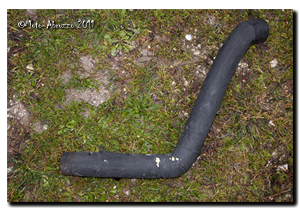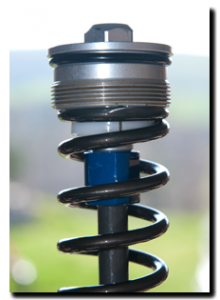 A last item remained on the Capo service ‘To-Do’ list … fork oil replacement, a job I hadn’t tackled before. It turned out to be a nice simple job, the only fly in the proverbial being the Aprilia document itself ….. or to be more exact, the amount of oil specified in the document.
A last item remained on the Capo service ‘To-Do’ list … fork oil replacement, a job I hadn’t tackled before. It turned out to be a nice simple job, the only fly in the proverbial being the Aprilia document itself ….. or to be more exact, the amount of oil specified in the document.
Firstly lets clarify terminology – the shiny 50mm shaft clamped to the bike is the ‘fork tube’, the painted part that holds the wheel/mudguard is the ‘fork slider’. The complete thing is the ‘fork leg’.
Removing the wheel, mudguard, crash bars and lower fairings only takes a few minutes and with the bike snugly supported below the sump guard, it was time to remove a fork leg. Tip1 – break the seal of the fork cap first (19mm socket) before dropping the leg out, Tip2 – only remove one leg at a time, it makes both the job and re-alignment much easier. Releasing the clamp bolts with the bodywork removed as you can see from the pictures, also makes for less hassle, swearing and knuckle grazing as well!
Once out, secure the leg vertically and remove the cap completely. I found it easier to hold the cap still and rotate the fork tube anti-clockwise to do this … don’t worry, nothing pings out under spring pressure on this type of fork. Once undone, you can let the tube drop down, oil won’t pour over the brim. Next, you have to remove the cap itself from the damper rod … use a 19mm spanner to break the seal between the locking nut and the cap. Once done, you can remove the cap by hand – again, don’t worry about spring pressure. The spring releases all it’s tension before the cap comes off.
Put the cap to one side and slide the spring out – make sure you have plastic inserts still attached at each end. Do it slowly to allow the oil to drain back down the coils and back into the slider … much less messy! No doubt the damper rod dropped into the slider, it’s not a problem. Now you’ve got to drain the oil out. I place a finger across the end of the tube to catch the damper rod and spring spacer while draining the oil. Once drained, tip the whole thing upside down and catch the spring spacer – careful the damper rod doesn’t shoot out and damage itself by hitting the bench. After pumping the slider/tube and damper rod, several times leave the leg upside down to drain for at least a few hours.
Clean everything and when you’re ready, start the refill. Now the book says to refill with 680cc of oil – 130mm below the lip of the compressed leg. The problem is that if you do this, oil will pour over the rim of the tube – clearly wrong! The book is also very woolly regarding oil grade and never mentions the grade that was used by the factory. Comparing the old oil to 5/10/15/20w fork oil, I’m pretty confident they used 10w, however I chose to use 8.5w based on load and riding style. After some experimentation and riding, this is the refill that works for me (updated 03/09/2014).
- Insert the fork spring spacer and compress the leg completely.
- Fill the leg to a depth of 115mm ±2mm (130mm ±2mm in the book) – blended 8.5w fork oil works for me. This is approx. 600cc of oil (580cc for 130mm air gap).
Remember to extend and compress the leg / damper rod while filling to expel as much air as possible. When done, rebuild and refit the leg. Repeat the exercise with the other leg. One fork leg controls rebound, the other compression damping – stripping is identical though. Don’t forget to torque the clamp bolts – 25Nm (18ftlb). Reassemble the mudguard, wheel, brakes and bodywork and sit back and relax, celebrating a job well done with a nice cool beer!
UPDATE 21/07/2011
In hindsight, the original oil may well have been closer to 15w …. the only thing touched outside the factory on this bike was the fork recall at 600 miles. The oil the dealer used and the oil used by the manufacturer may well be different!
Since then, I’ve replaced it for a blend that works out at 8-8.5w …… and it’s bloody fantastic! The bike tracks well off-road and both front/rear suspension work in unison on-road. The blend used is Motul 5w (78%) and Motul 20w(22%) with a combined range of approx. cSt@40c = 29 and cSt@100c = 7.5
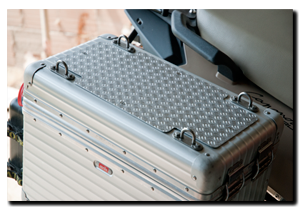 I’ve written before about the good and bad points of the Aprilia (Rimowa) panniers, but one of the niggles I never mentioned was the carry handle on the lid. I never use it and the damn thing gets in the way.
I’ve written before about the good and bad points of the Aprilia (Rimowa) panniers, but one of the niggles I never mentioned was the carry handle on the lid. I never use it and the damn thing gets in the way.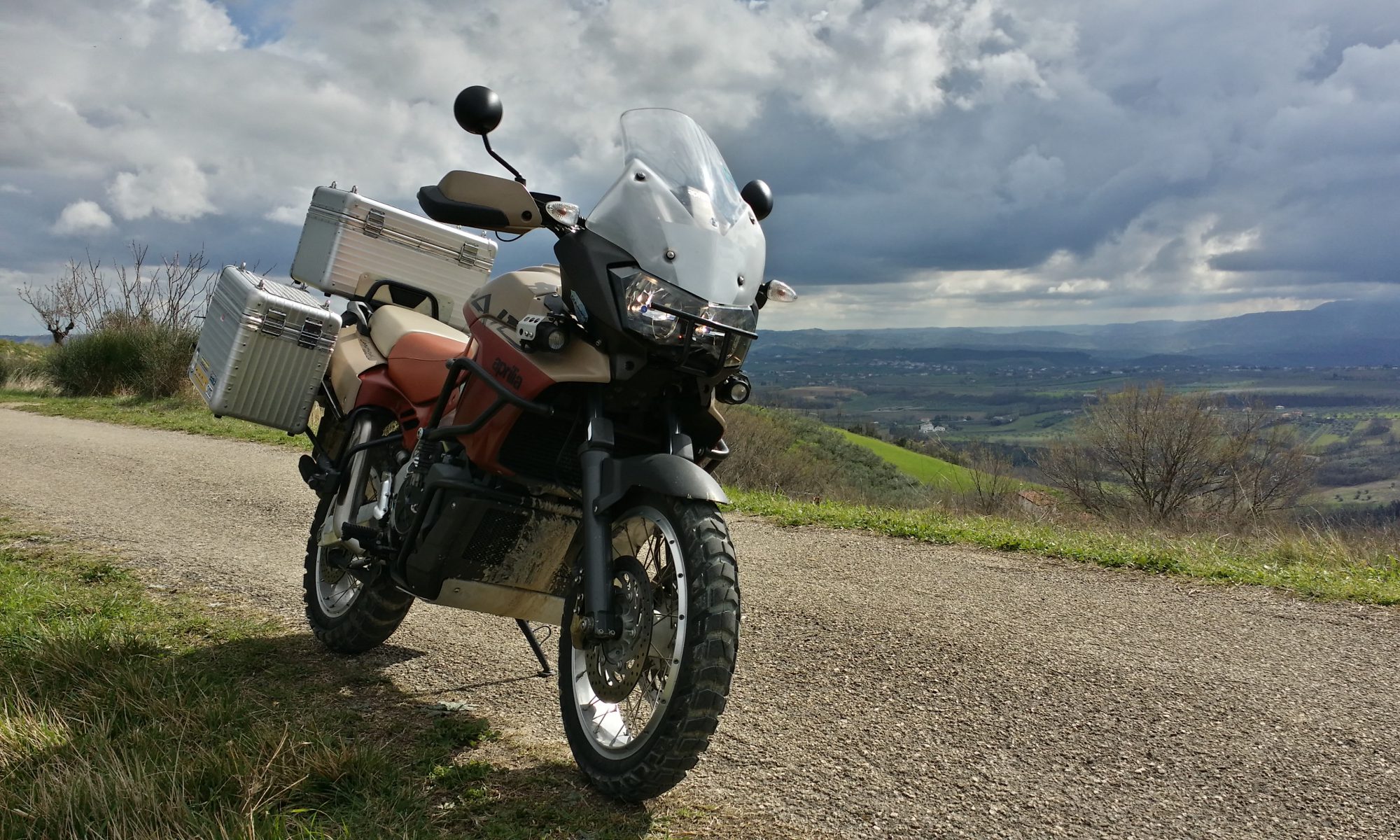
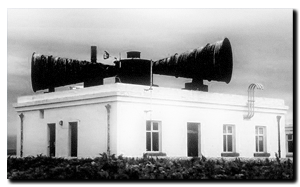 As an Bike Instructor I’m almost daily pointing out what the Highway Code has to say about the horn:- It’s
As an Bike Instructor I’m almost daily pointing out what the Highway Code has to say about the horn:- It’s 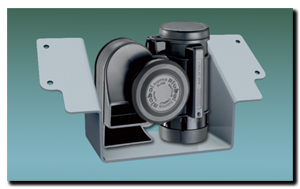 mounting brackets to fit it where the ABS unit would go if I had ABS, which I don’t. It fits nice and snug in the space below the relays and coils, behind the rear suspension unit and seems to be pretty well shielded from road crap. The existing Grey horn wire behind the headlight, is tapped into, shielded and run back to the new relay. Yes, the horn needs a relay to operate as it draws 18A … that’s a toasty 216w … or 10 sets of heated grips worth of electricity to you sir! And yes, before you ask – it’s protected with a waterproof 20A fuse. So now the existing horn and the new one work in parallel … if one fails, I have a backup!
mounting brackets to fit it where the ABS unit would go if I had ABS, which I don’t. It fits nice and snug in the space below the relays and coils, behind the rear suspension unit and seems to be pretty well shielded from road crap. The existing Grey horn wire behind the headlight, is tapped into, shielded and run back to the new relay. Yes, the horn needs a relay to operate as it draws 18A … that’s a toasty 216w … or 10 sets of heated grips worth of electricity to you sir! And yes, before you ask – it’s protected with a waterproof 20A fuse. So now the existing horn and the new one work in parallel … if one fails, I have a backup!





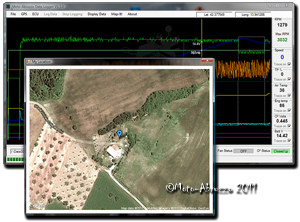
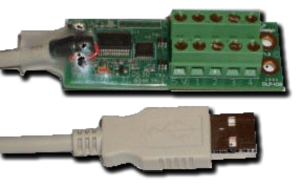 (measured not GPS), brake line pressure and gear position may well be handled by this little device. 8 x 5v analogue inputs should be fine … all looks fairly straight forward in the instruction book anyway. We’ll see!
(measured not GPS), brake line pressure and gear position may well be handled by this little device. 8 x 5v analogue inputs should be fine … all looks fairly straight forward in the instruction book anyway. We’ll see!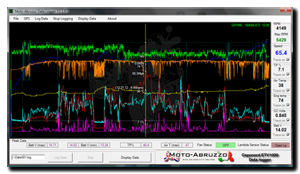
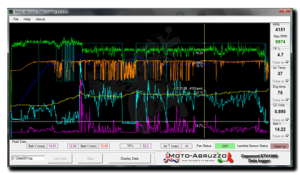
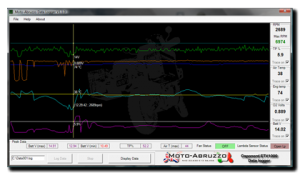




 A new version of TuneECU has been released that may well be relevant to Caponord/Futura owners. If you have recently downloaded
A new version of TuneECU has been released that may well be relevant to Caponord/Futura owners. If you have recently downloaded 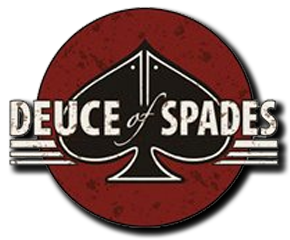
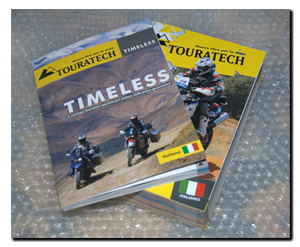 The new
The new 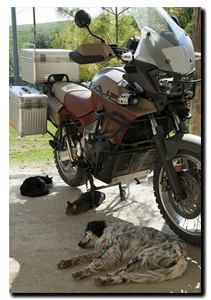
 A last item remained on the Capo service ‘To-Do’ list … fork oil replacement, a job I hadn’t tackled before. It turned out to be a nice simple job, the only fly in the proverbial being the Aprilia document itself ….. or to be more exact, the amount of oil specified in the document.
A last item remained on the Capo service ‘To-Do’ list … fork oil replacement, a job I hadn’t tackled before. It turned out to be a nice simple job, the only fly in the proverbial being the Aprilia document itself ….. or to be more exact, the amount of oil specified in the document.





